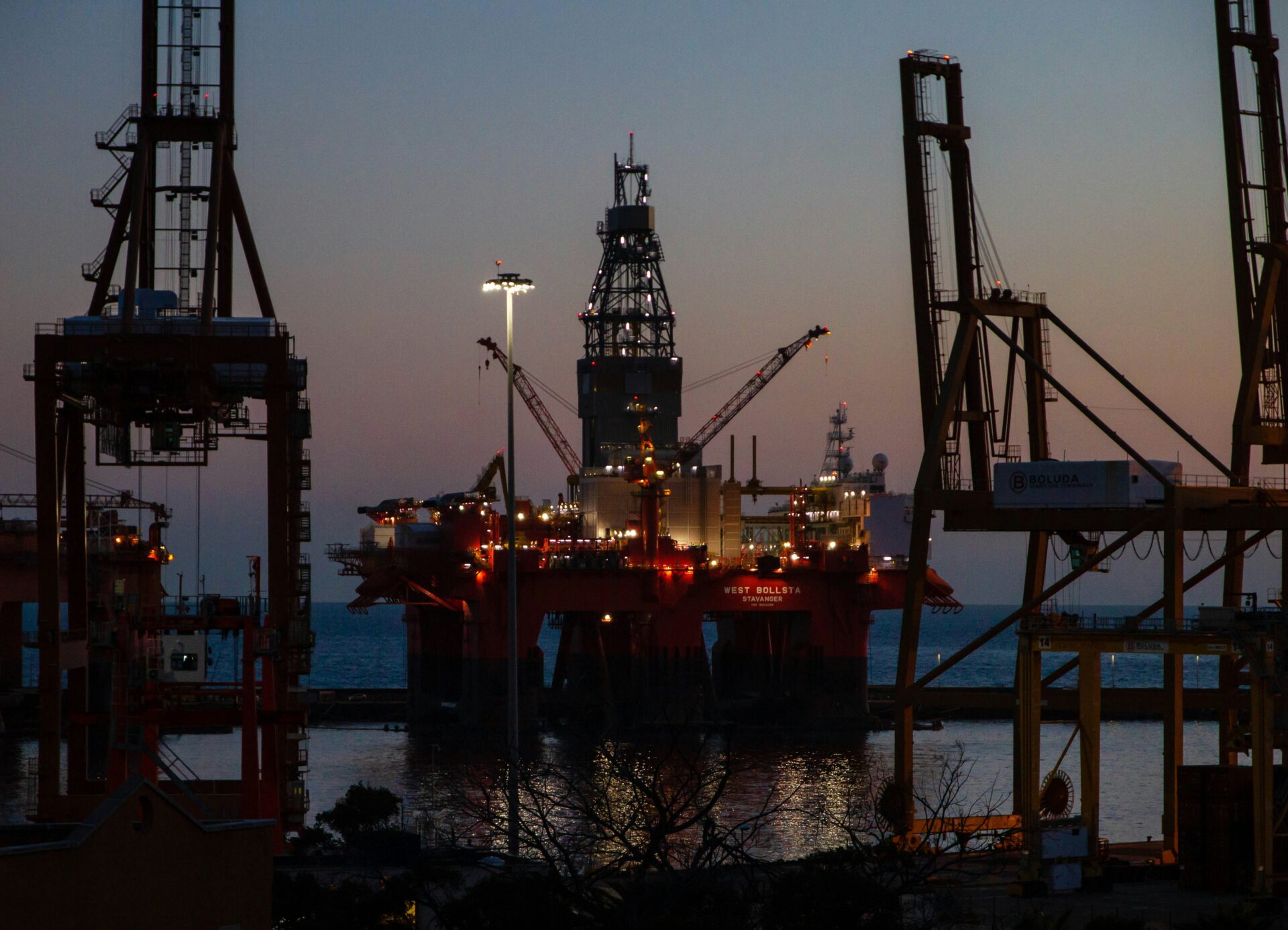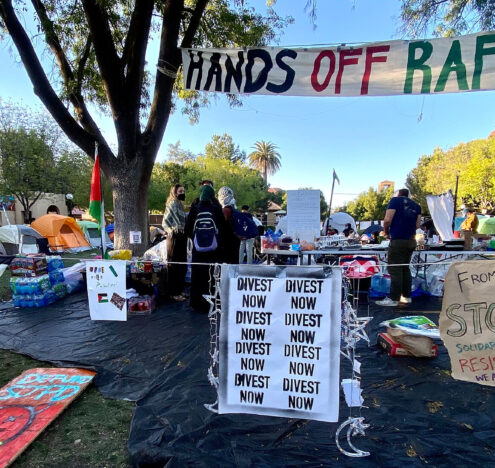In the grand chessboard of global energy politics, Russia has emerged as a pivotal player, backed by its vast hydrocarbon reserves, production, and exports. The oil and gas sectors are essential for the Russian regime and its economy, given that they account for up to 45% of its federal budget and around two-thirds of all its national exports. Still, Russia’s full-scale invasion of Ukraine marked a turning point. The US, the European Union, and some Western countries sought to isolate Moscow, a strategy that appeared effective early on in the war, and provided support to Kyiv. Western sanctions have exacted a toll on Russia, substantially disrupting its conventional fossil fuel export pathways.
Despite the West imposing price caps on Russian oil, Russia’s oil sector has adapted rather quickly to the new reality. This resilience owes largely to the two major consumers who refused to join the sanctions against Russia — China and India — coupled with the widespread use of seaborne oil transport. The gas sector, on the other hand, confronts a different situation facing distinct challenges in adapting to the new geopolitical environment, despite possessing the world’s largest gas reserves and a leading position in global gas exports.
The EU, once the largest consumer and heavily dependent on Russian gas, initially avoided imposing sanctions on these imports. But a series of events led to a dramatic reduction in Russian gas imports to the EU: Russia’s demand for Rouble payments, the suspension of the Nord Stream 1 pipeline over “technical issues,” and subsequent mysterious, underwater explosions hit both Nord Stream pipelines in September 2022.
In need of new markets and amid a shifting geopolitical landscape, Russia has increasingly turned towards China. This accelerated pivot aims to redirect its gas exports to China and secure China’s international support. As a significant energy consumer and importer with growing gas demands, China has recently strengthened its comprehensive strategic partnership with Russia, which, in Moscow’s eyes, makes it an ideal alternative to redirect gas exports.
But the view of China as a prime substitute for Russia’s traditional primary European market, while seemingly popular, might be too simplistic. A more nuanced perspective is needed to properly grasp the intricacies of this evolving energy landscape. It is noteworthy that over 80% of Russia’s natural gas production in recent years has originated from the Arctic region. As an “emerging energy province,” the Arctic region is abundant in hydrocarbon reserves, holding about 30% of the world’s untapped natural gas, predominantly in the Russian Arctic. The rich gas resources in the Arctic are a key aspect of Sino-Russian cooperation, primarily revolving around liquefied natural gas (LNG) due to the absence of pipeline infrastructure and the flexibility of LNG transportation. Unlike pipeline gas, LNG can be shipped in LNG carriers (up to 260,000 cubic meters per carrier) over the sea to anywhere with an equipped receiving terminal, which offers greater versatility for global gas trade and gas supply.
China’s crucial role in Russia’s Arctic LNG projects
China plays a crucial role in the major Russian Novatek-operated LNG projects: Yamal LNG and Arctic LNG 2. Its extensive involvement in both projects includes substantial investments, contracted construction, and sale and purchase agreements. China stands as the leading foreign investor in Yamal LNG, the most significant LNG project in the Arctic and a key pillar of Sino-Russian Arctic energy collaboration. Operational since 2017, the project has sustained its momentum without needing additional Western financial or technological contributions. Furthermore, with the EU refraining from imposing a direct ban on Russian LNG imports, Yamal LNG continues its successful operations in the evolving geopolitical landscape.
Arctic LNG 2, following Yamal LNG’s blueprint, represents another significant LNG endeavor but faces a contrasting scenario arising from Western sanctions. Notably, the EU’s ban on liquefaction technology transfer to Russia and the US sanctions targeting Novatek and the project itself have considerably complicated the project’s trajectory, especially on financial and technological matters. Major Western shareholders, French TotalEnergies and the Japanese consortium of Mitsui and JOGMEC, each holding a 10% stake, have suspended new capital inflows while retaining their existing shares in the project. Technologically, the withdrawal of European engineering giants Technip Energies and Saipem has been a major setback. However, the project demonstrated resilience by substituting Western components with Chinese equivalents. Despite international skepticism and operational hurdles, the first production line remarkably commenced on Dec. 21, 2023, aligning with the initial project schedule. The first train is currently operating at half capacity due to a shortfall in gas turbines from its original American supplier, Baker Hughes, as a consequence of the sanctions. But full capacity is expected once the replacements from Chinese supplier Harbin Guanghan are delivered and installed.
In Russia, China’s current and future involvement in Russian Arctic LNG projects is seen as more technology-oriented than investment-driven in the shifted geopolitical context. Chinese stakeholders tend to view these projects as opportunities to expand their influence in project planning and implementation, especially given the Western withdrawals. Meanwhile, they remain mindful of potential secondary sanctions and associated risks. Thus, Chinese companies are advised to selectively fill the gaps in equity, technology, and market needs left by Western companies, based on short-term and long-term energy market trends.
From a Russian perspective, while China’s cautious stance is understandable, the reliance on Chinese technology supply, as illustrated in Arctic LNG 2, is evident. Reduced gas prices offered to China may also serve as incentives for Chinese technological support. Nonetheless, despite these discounts, Russian LNG has not yet gained competitiveness, not even a pricing advantage, in the Chinese market. Even though China has recently increased its LNG imports from Russia, China’s LNG market still primarily relies on suppliers like Australia, Qatar, and Malaysia for volume and cost-effectiveness, as indicated by Chinese Customs Statistics for 2022 and 2023 (January-November). For China, deepening engagement in these LNG projects aligns with its goals of securing and diversifying gas supplies and transitioning from coal to cleaner gas. The latter is a key step in China’s energy transition, and both goals are core components of China’s energy security.
China’s reluctance towards Russia’s Arctic pipeline gas
Besides the extensive cooperation in Arctic LNG projects, pipeline gas also plays a role in Sino-Russian Arctic gas cooperation. The Power of Siberia (PS) pipeline, operational since 2019, is the only direct gas pipeline from Russia to China, hailed as a milestone in Sino-Russian energy cooperation. Although PS’s gas fields are not in the Arctic, its successor, the proposed Power of Siberia 2 (PS2), is designed to transport natural gas from the Yamal Peninsula in the Russian Arctic to China via Mongolia. The ambition of PS2 is to deliver 50 billion cubic meters of gas annually to China by 2030, a volume nearly equivalent to the former Nord Stream 1 pipeline’s capacity to Europe before its destruction.
Back in 2020, in a different prewar global landscape, Gazprom, a Russian state-controlled energy titan, laid the groundwork for PS2 with a feasibility study. Fast forwarding to the heat of the war, the Kremlin stepped up its efforts to push the PS2 project, weaving a compelling narrative of progress and cooperation. For instance, a significant diplomatic maneuver was reached at the Shanghai Cooperation Organization summit in September 2022. That is, China, Russia, and Mongolia collectively agreed to fast-track the PS2 project. But this is where the intrigue emerges. Despite this high-level consensus, the reality tells a different story — concrete actions on the ground are still missing. Even after President Vladimir Putin’s confident assertions of near-complete agreement on PS2 during President Xi Jinping’s state visit to Russia in March 2023 and the subsequent reaffirmation of the project at the Belt and Road Forum in October, tangible progress is as elusive as ever. Despite Russia’s blazing enthusiasm, China has been playing it cool with its response: its official communications on PS2 are lukewarm at best, leaving the world wondering about the future of this energy saga.
In China, stakeholders’ skepticism casts a long shadow over PS2’s prospects. The undertaking is no doubt costly and time-consuming. It also raises questions about Gazprom’s ability to manage such a vast project alongside its commitments to other ongoing, large-scale energy ventures. Moreover, the strategic value of PS2 is perceived to be greater for Russia than for China, considering China’s access to alternative gas sources and its lack of urgency for immediate solutions. This viewpoint also extends to the wider context of Sino-Russian gas cooperation. Additionally, there is speculation that Russia’s push for the Mongolian transit route might not be just about logistics but a chess move in the grand game of counterbalancing China’s growing influence in the Far East. Such dynamics reveal the complexity and unpredictability of the PS2 project in international energy politics amid evolving geopolitical realities.
Gas transportation’s dependency on pipeline infrastructure significantly constrains redirecting Russian gas exports to China, particularly due to the lack of pipeline connectivity from Russia’s main gas fields in the Arctic to China. Despite Russia’s strong enthusiasm for the planned PS2, China has remained lukewarm, given its access to alternative gas sources and skepticism about the project’s viability. While LNG offers a flexible transportation option, the lack of an EU-wide ban on LNG imports means that Russia can still significantly trade LNG with EU countries, diminishing the immediacy of redirecting exports. Additionally, Russian LNG struggles to establish a pricing or competitive edge in the competitive Chinese LNG market. Nevertheless, the retreat of Western companies does open a door for China, whose technological advancements may permit it to play a more strategic role in Russian Arctic LNG projects.





















